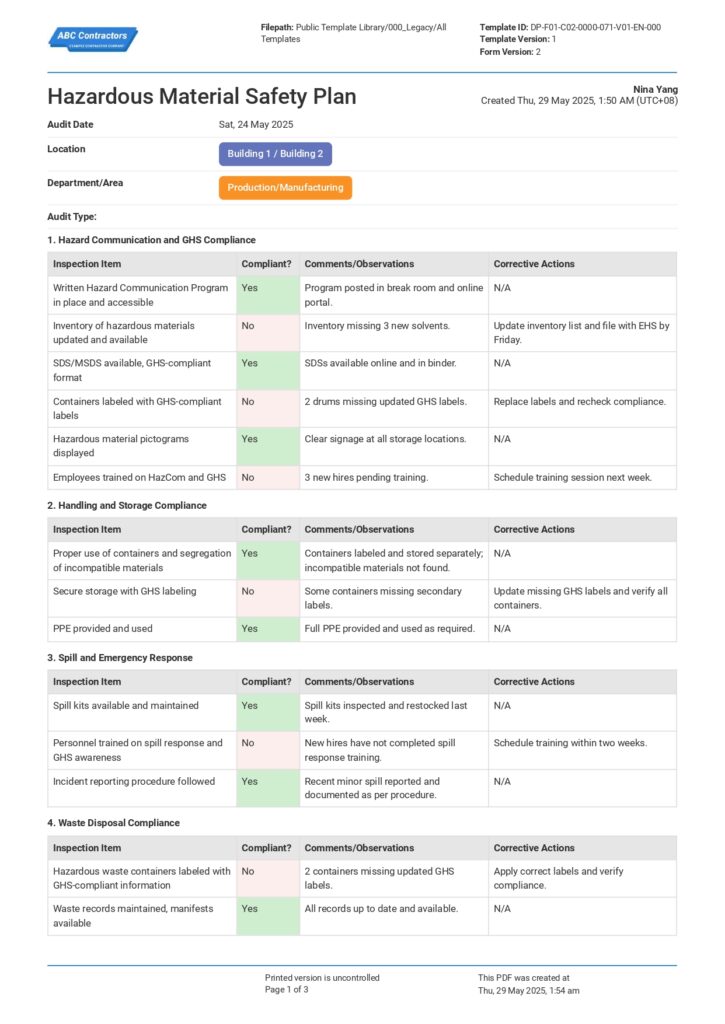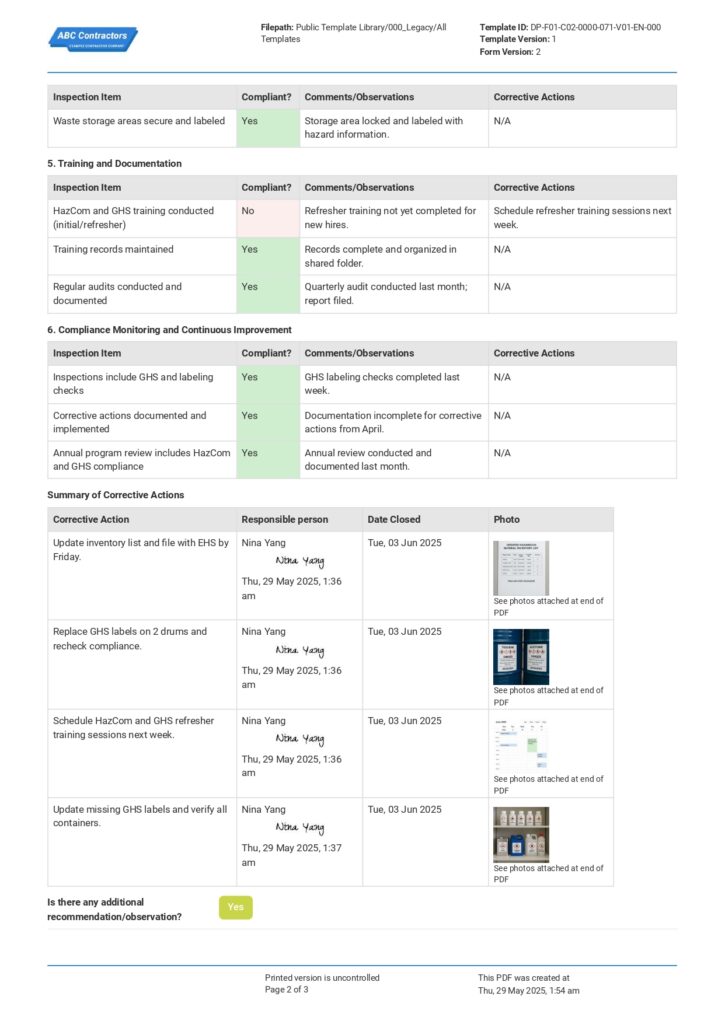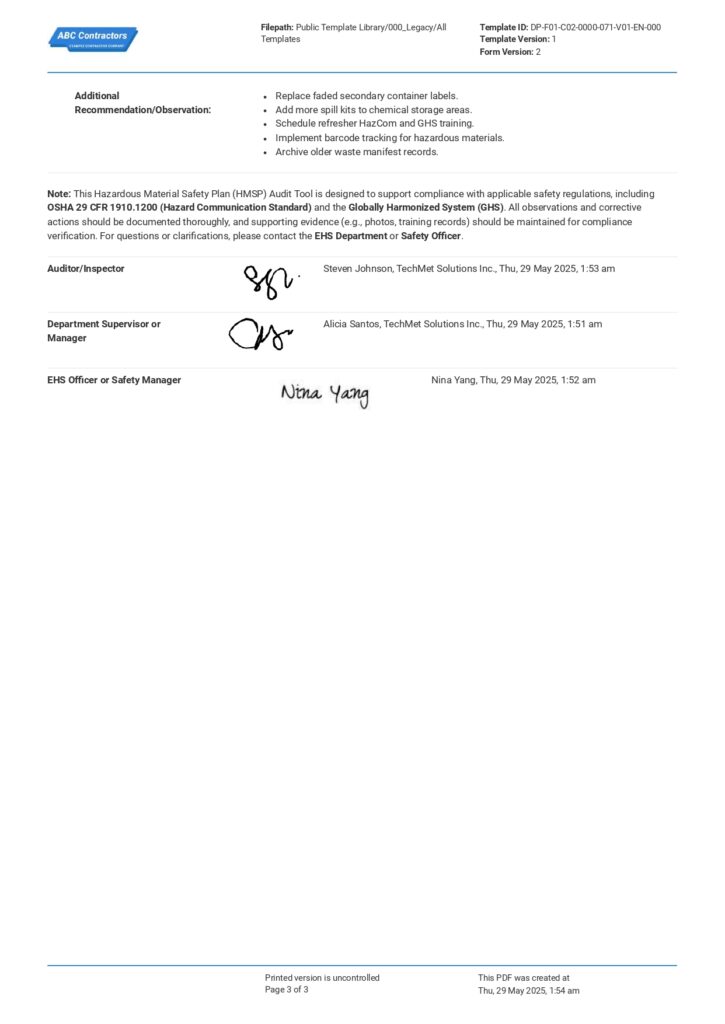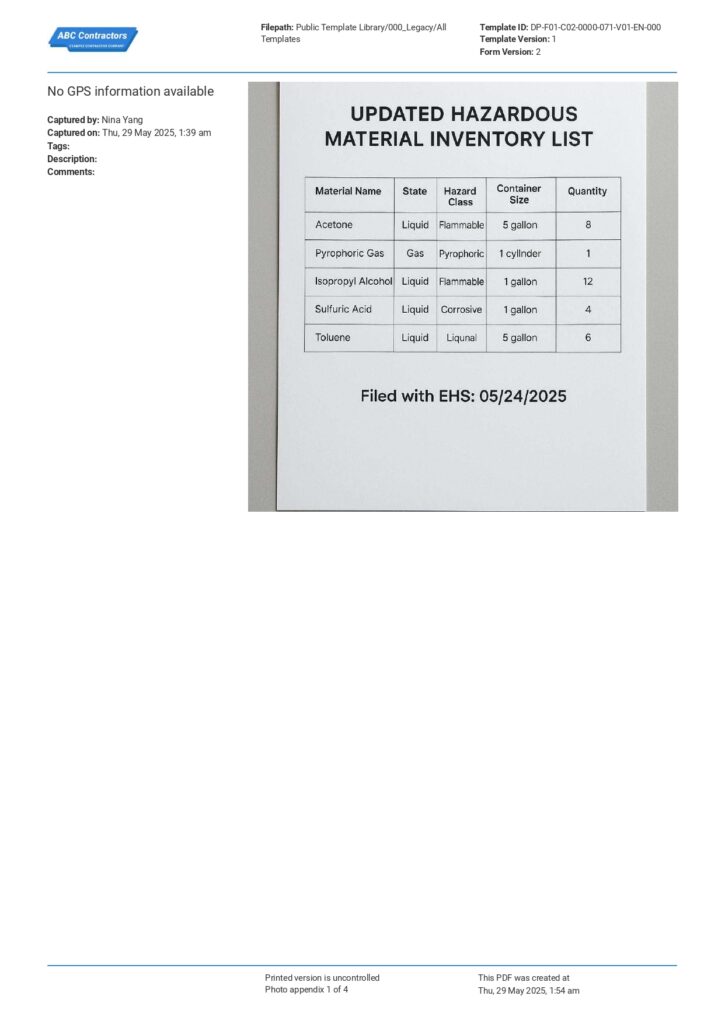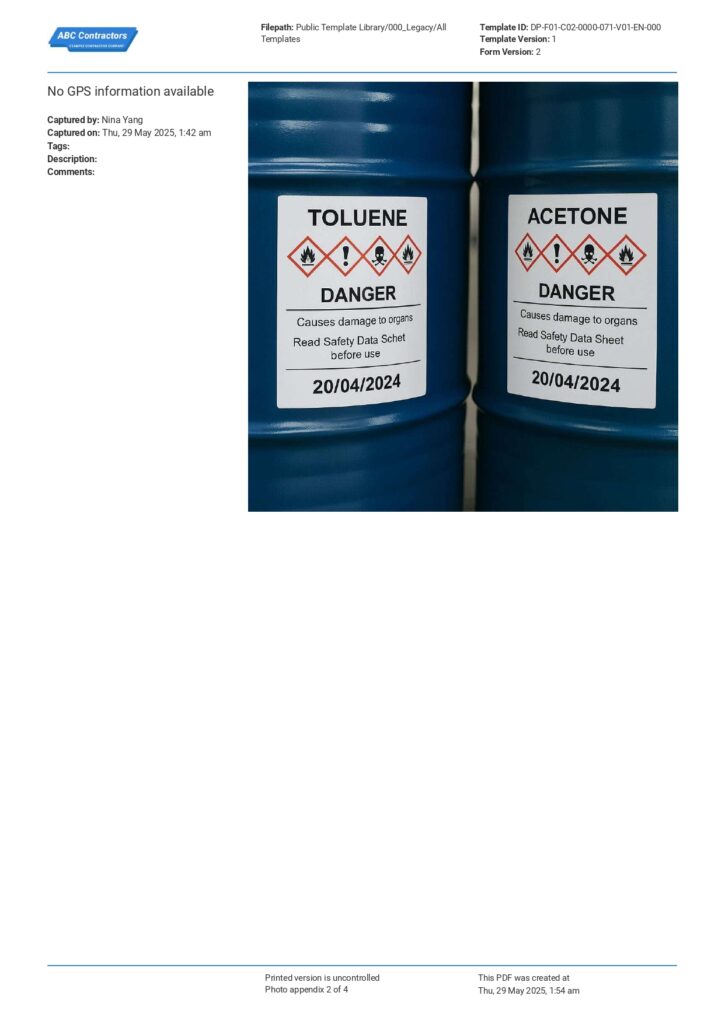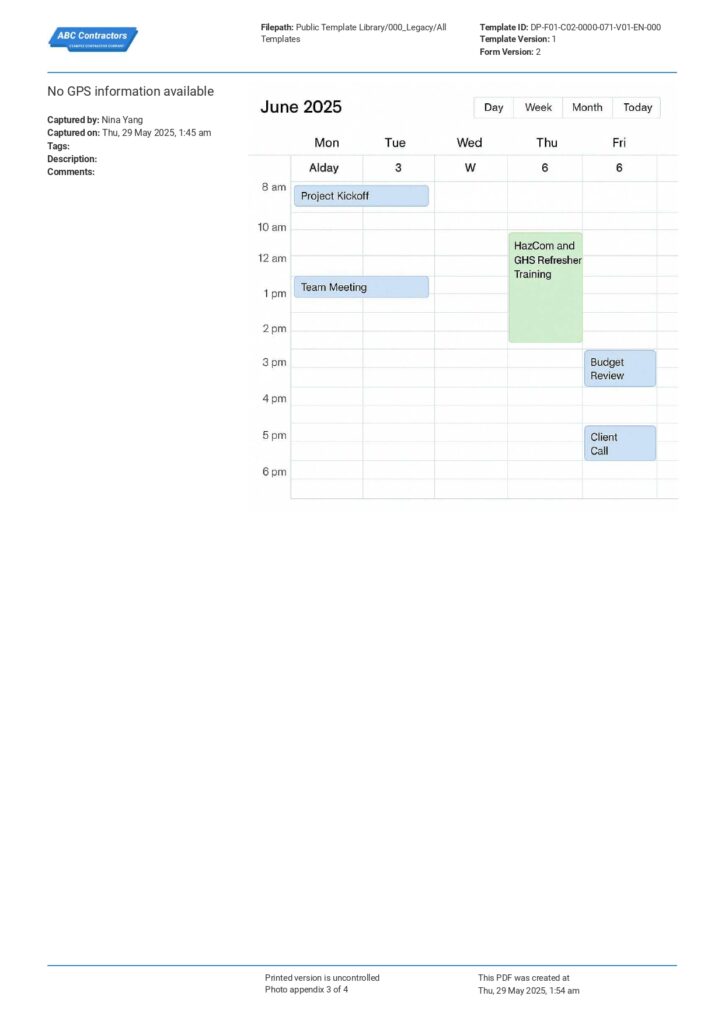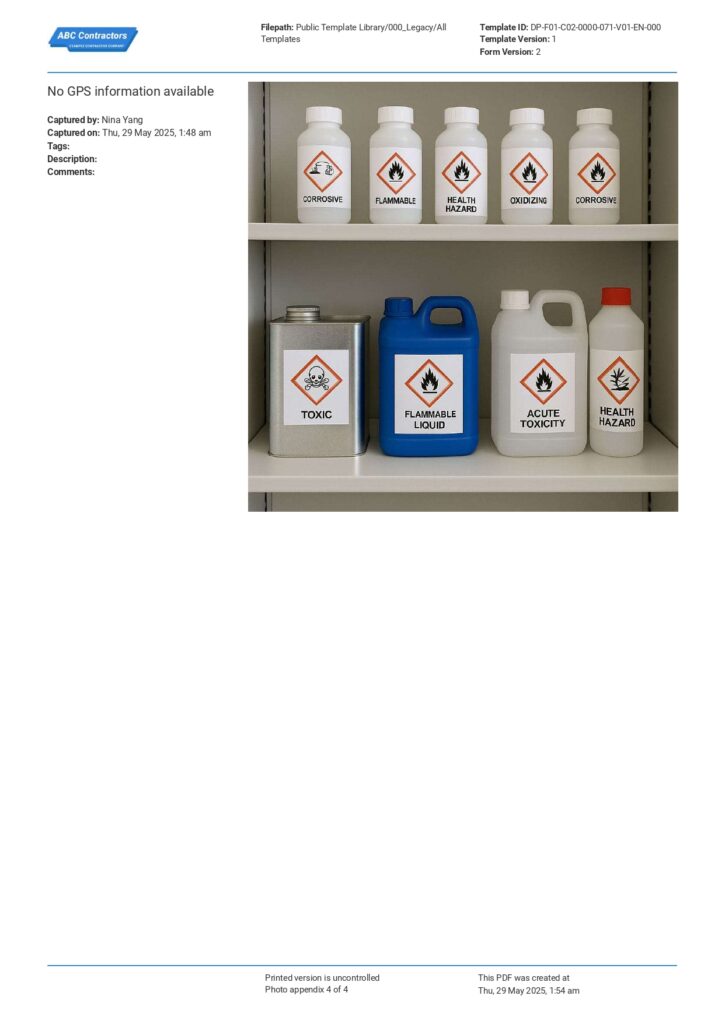Hazardous Material Safety Plan Template
Start with a free 30-day trial. No credit card required.
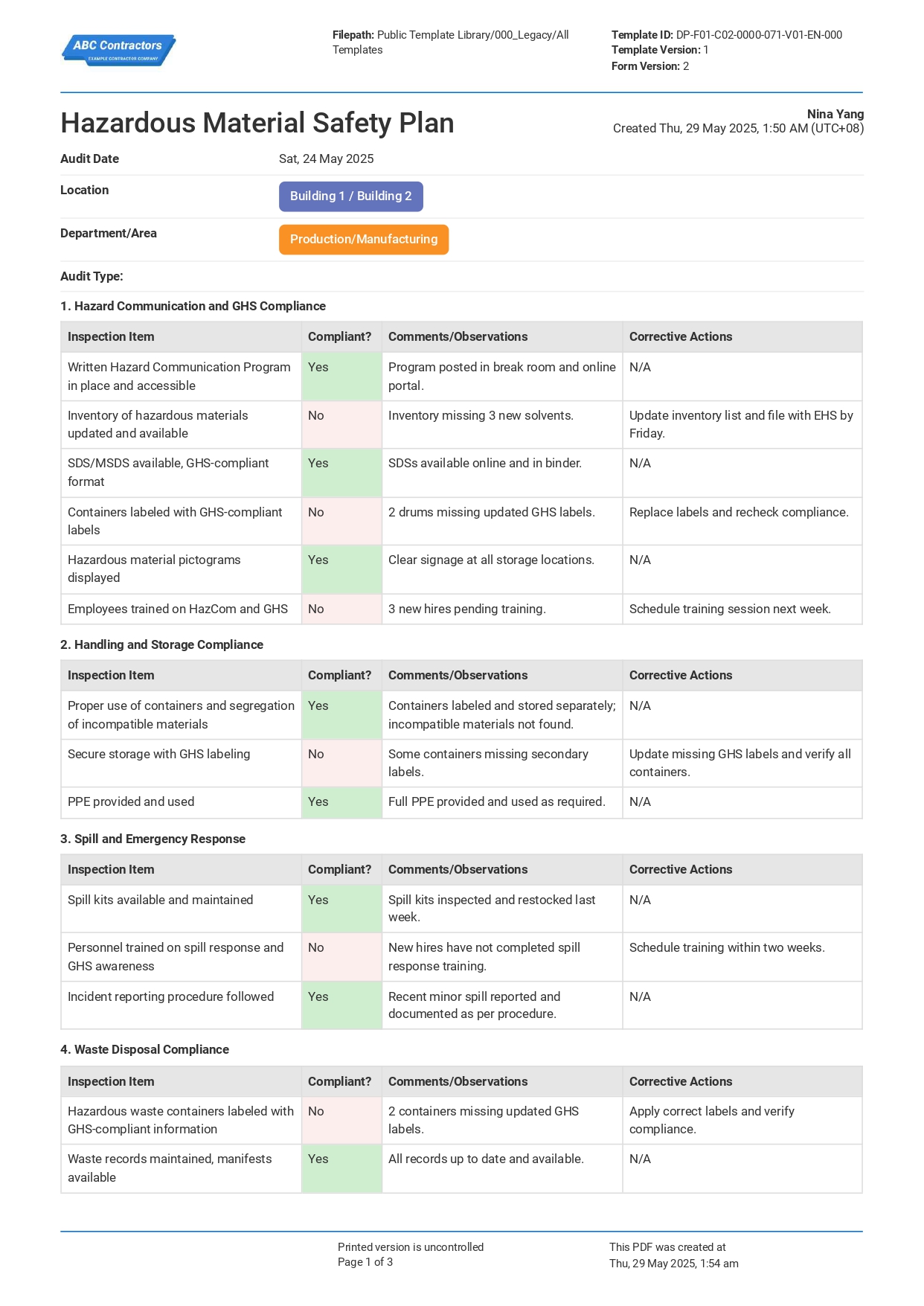
~200 employees
~20 employees
~25,000 employees
~40 employees
~10,000 employees
~1,500 employees
~35,000 employees
What is a Hazardous Material Safety Plan?
A Hazardous Material Safety Plan is a document of the system of a company or facility outlining the ways they are managing hazardous materials or serves as a hazardous material guide. As an audit tool, it confirms whether the activities involving the use of hazardous material, the procedures, the people involved, and the controls in place are compliant or not with respect to safety. A Hazardous Material Safety Plan is audited by internal safety officers, external auditors, and regulatory bodies. If non-compliance is found, a corrective action summary with its corresponding responsibility and deadlines should be included, which means that a comprehensive audit tool is necessary to cover all these essential inclusions to make a reliable report.
Compare this sample Hazardous Material Safety Plan to other paper-based forms made from Word, Doc or Excel
Use this Hazardous Material Safety Plan template for free.
Difference between Hazardous Material Management Plan and Hazardous Material Safety Plan
There are key differences between Hazardous Material Management Plan (HMMP) and Hazardous Material Safety Plan (HMSP) in terms of its scope. Both deals with the handling of hazardous materials that is why there are times they are used interchangeably, however HMMP is broader and deals with management of hazardous materials holistically while HMSP focuses on outlining safety practices and protocols to protect all stakeholders.
Hazardous Material Management Plan is designed for larger companies in handling hazardous materials from inventory, supplier management up until disposal. This is usually policy-heavy while Hazardous Material Safety Plan is often procedural and instructional.
Elements of a Hazardous Material Plan
Creating a Hazardous Material Safety plan should be as strong as the systems behind it, from the planning, execution, documentation all the way down to ensuring member of the company is on board in establishing safety. A hazardous material safety plan consists of several elements that define how the company handles hazardous material safety that generally includes its entry to the premises of the company, its use, and its disposal. These important elements are also what internal and external auditors review for its execution and maintenance. It is a directive that involves all stakeholders of the company, the employees who are using these materials, the activities it involves, storage, and how it is disposed of.
The following are the elements of a hazardous material safety plan:
- Hazard Communication
- Storage Compliance
- Emergency Response Plan
- Waste Disposal Compliance
- Training
Hazard Communication and Training
Communicating hazardous material risks is not just about verbally informing or regularly training operators. It is legally required, such as in the Globally Harmonized System of Classification and Labelling of Chemicals (GHS), OSHA, and other standards, that there should be a written hazard communication program in place, the inventory is regularly updated and available, and there are clear and proper labels on every material. It communicates even to those that are not working in the area that the use of the material is a risk to safety. This is both for compliance and strengthens the safety of all those handling the hazardous material.
Storage Compliance
Poor storage of hazardous materials is a huge safety risk and is the leading cause of workplace accidents relating to hazardous materials All hazardous materials must be kept and stored properly in their designated storage location. Primarily, this is to avoid spills and accidental exposure due to poor storage conditions. Depending on the material, i.e., flammable liquids that pose specific hazards, they must be kept and stored in approved containers or cabinets. When required, there should be personal protective equipment (PPE) available around the storage area.
Emergency Response Plan
A clear emergency response plan is an integral part of hazardous material safety planning. It should cite the steps in case of accidents, and it should involve an emergency response team or trained personnel to lead in defining the safety measures, response, and identifying sources of potential accidents in handling hazardous materials. Additionally, there should be an established preventive maintenance program in the case of emergencies involving hazardous materials to assure safety.
Waste Disposal Compliance
Waste Disposal of hazardous materials are monitored also by local laws as it affects the community of the facility. Part of the safety plan is accurate labels for wastes to be disposed and there’s an accurate record of the waste disposed.
In summary, these areas are all elements of a hazardous material safety plan and are critical in controlling the hazard. When designing a safety plan, it is important to take time to plan and consider the tasks and the work activities involved before integrating these aspects. It’s all part of the check items as well during audits.
Keeping Your Hazardous Material Safety Plan aligned with OSHA updates
A hazardous material safety plan must be maintained by proactively reviewing the activities and environmental conditions of the operations involving hazardous materials. Primarily, to avoid fines and continue the certification, businesses must ensure that it is aligned with industry standards such as OSHA’s Hazard Communication Standard.
Keeping up with OSHA alignment for your Hazardous Material Safety Plan means that your company must review safety plans regularly, monitor OSHA’s bulletins and regulatory news, and have your team attend industry webinars or subscribe to their mailing list. This ensures that if there is an update, it is reflected in your next audits.
For example, as of 2024, OSHA updated the labeling rules for small containers (≤100mL and ≤3mL) of hazardous materials to ensure that small packaging have readable markings. This means that a company seeking OSHA certification should start redesigning container labels.
The action to do is straightforward, but ensuring the Hazardous Material Safety Plan keeps up with the changes requires conducting a packaging audit, making use of an easy-to-edit and access Hazardous Material Safety Plan checklist to confirm it’s been actioned, and developing a response plan to work with suppliers for the labels to confirm compliance.
With OSHA, staying compliant does not happen just once after a single internal audit, although internal audits are one way. Businesses must look at the documentation as living, dynamic, and subject to revision as the need arises.
Frequently Asked Questions
Why is this the best Hazardous Material Safety Plan template?
Sitemate's Hazardous Material Safety Plan is the best safety plan auditing template because it is proven and trusted by companies with solid safety management systems. It comes pre-built to align with workplace safety best practice, and is quick and easy to use for any type of worker.
Is this template compliant with OSHA and GHS standards?
Yes - this template can be configured to align with OSHA and GHS standards. You can also easily edit it as the need arises such as policy updates and confirmation of actions. It's already used by certified contractors across multiple industries to either get or maintain certification status.
Can I edit this Hazardous Material Safety Plan to keep up with OSHA updates?
Yes - the template is completely editable with easy drag-and-drop functionality. You can create thousands of potential document setups using different field types including tables, formulas, photos and more, to cater to any type of data capture, as well as add your company logo, custom headers and other important structure. All of this configuration is powered by Dashpivot's template builder.
Can I attach Safety Data Sheets (SDS) and external certification to the plan?
Yes. You can attach PDFs as well as add photos in this Hazardous Material Safety Plan. It can also be exported as PDF and CSV along with the attachments you included during filling out.
Other popular templates you can use and edit for free

Hazardous Waste Management Plan
Streamline your waste handling processes with an efficient management plan document builder.
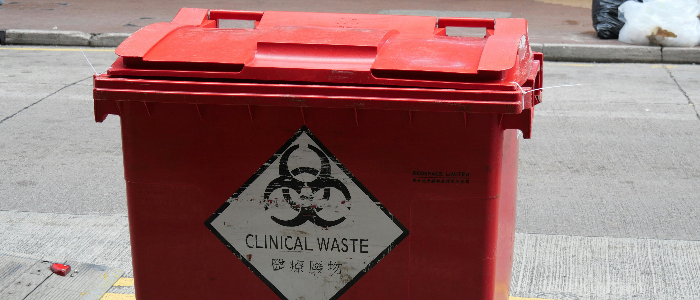
Contaminated Waste Disposal Log
Easily log disposed contaminated waste from your mobile device or tablet, efficiently.

Equipment Decontamination Checklist
Go through decontamination check items conveniently, and spot non-compliances easily during reviews.
This Safety Plan was generated with Dashpivot software
Start auditing your safety plans using your mobile devices and go paperless. Save time with streamlined reviews and approvals by going digital.
- Open and access your safety plans from any device - mobile, tablet or computer.
- Print and share your safety plans as perfectly formatted PDF documents with your company logo.
- Store and manage your hazardous material safety plan securely online, where they can be searched and found in an instant.
- Invite internal and external parties to see, edit and sign off on safety plans online.
Sitemate builds best-in-class software tools for built world companies.
